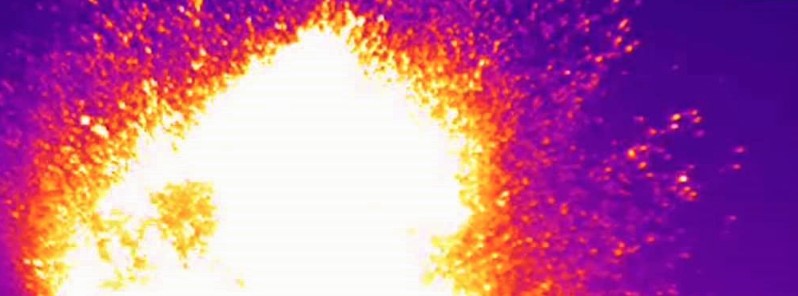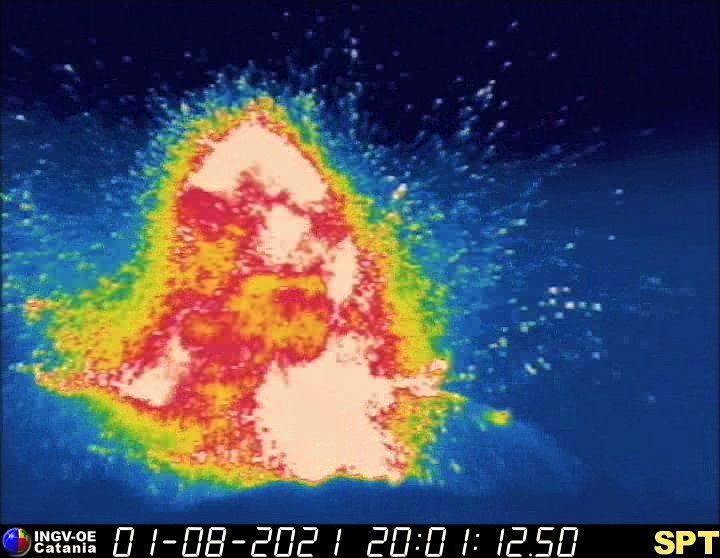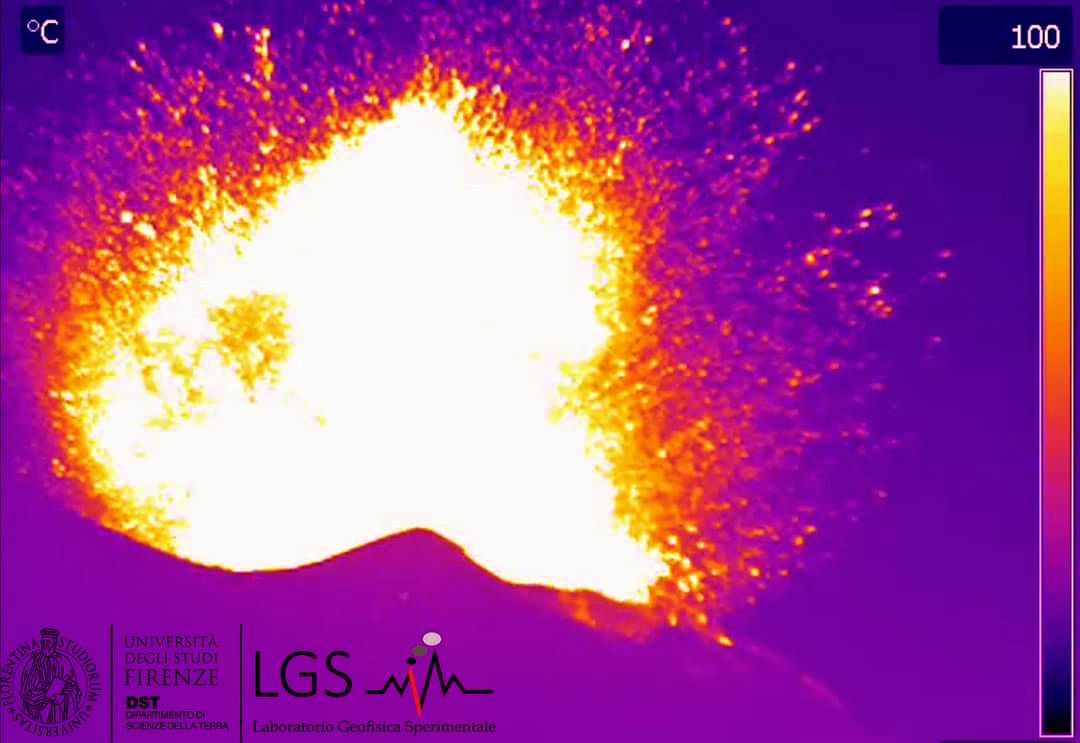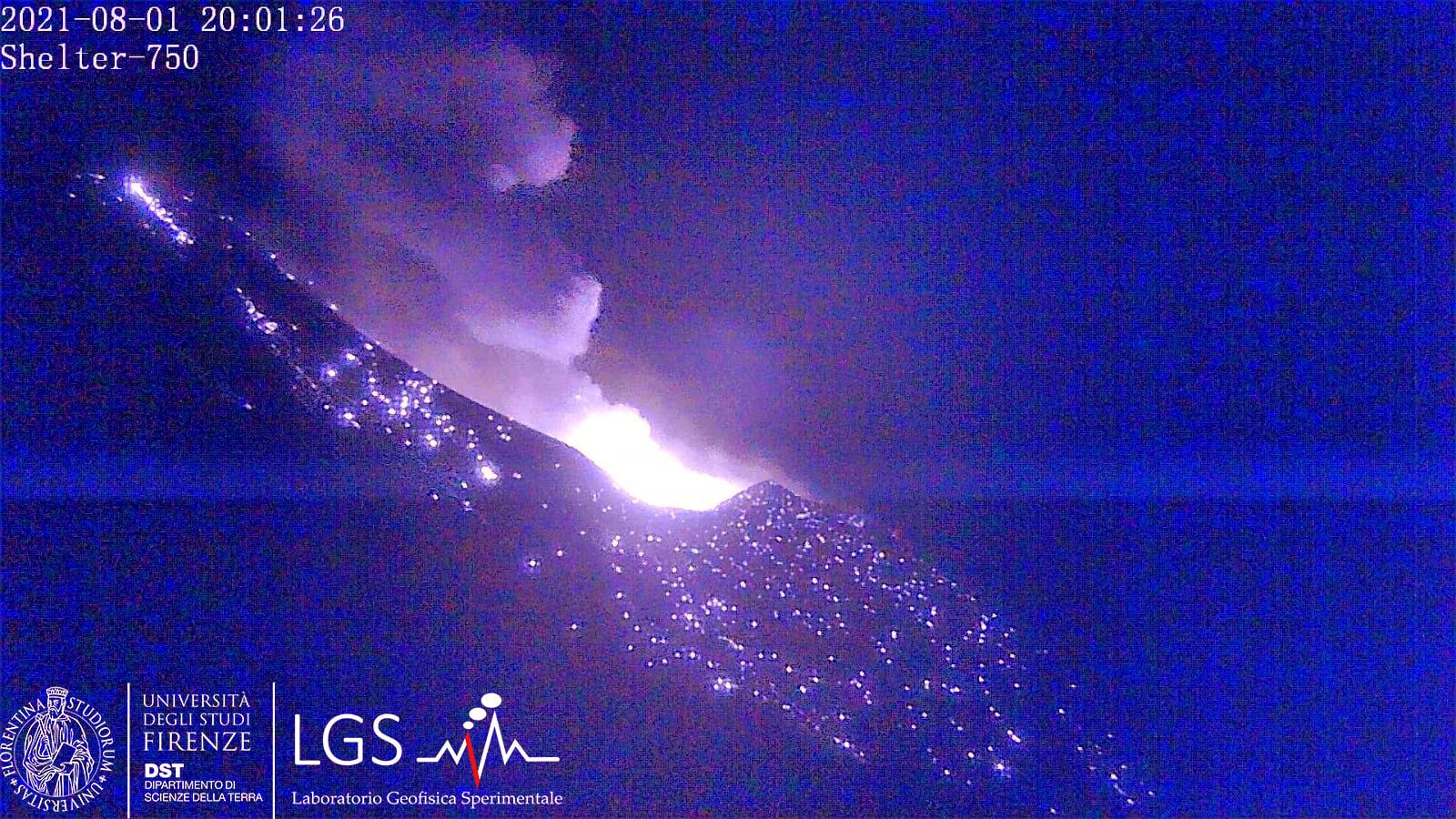Major explosive event at Stromboli volcano, Italy

A major explosive eruption took place at Stromboli volcano, Italy at 20:09 UTC on August 1, 2021. This is the second larger than usual explosion at the volcano since July 28.
Analysis of the event indicated that the eruptive activity produced a significant emission of volcanic material that reached heights of over 150 m (490 feet) at the mouth and dispersed beyond the crater terrace, affecting the Pizzo area and rolling along the Sciara del Fuoco.
No change in activity was recorded after the explosive event.
From the seismic point of view, the event was clearly visible on all seismic stations at Stromboli. Regarding the amplitude of the volcanic tremor, a sharp increase was observed from 19:50 UTC with a maximum peak on high values around 20:00 UTC.
Strain signals from GNSS and Stromboli clinometric networks show no significant variation associated with the explosive event.
All parameters returned to normal at 21:30 UTC.



Geological summary
Spectacular incandescent nighttime explosions at this volcano have long attracted visitors to the "Lighthouse of the Mediterranean."
Stromboli, the NE-most of the Aeolian Islands, has lent its name to the frequent mild explosive activity that has characterized its eruptions throughout much of historical time.
The small, 924-m-high (3 031 feet) island is the emergent summit of a volcano that grew in two main eruptive cycles, the last of which formed the western portion of the island.
The Neostromboli eruptive period from about 13 000 to 5 000 years ago was followed by formation of the modern Stromboli edifice. The active summit vents are located at the head of the Sciara del Fuoco, a prominent horseshoe-shaped scarp formed about 5 000 years ago as a result of the most recent of a series of slope failures that extend to below sea level.
The modern volcano has been constructed within this scarp, which funnels pyroclastic ejecta and lava flows to the NW. Essentially continuous mild strombolian explosions, sometimes accompanied by lava flows, have been recorded for more than a millennium. (GVP)
Featured image credit: LGS

Commenting rules and guidelines
We value the thoughts and opinions of our readers and welcome healthy discussions on our website. In order to maintain a respectful and positive community, we ask that all commenters follow these rules.